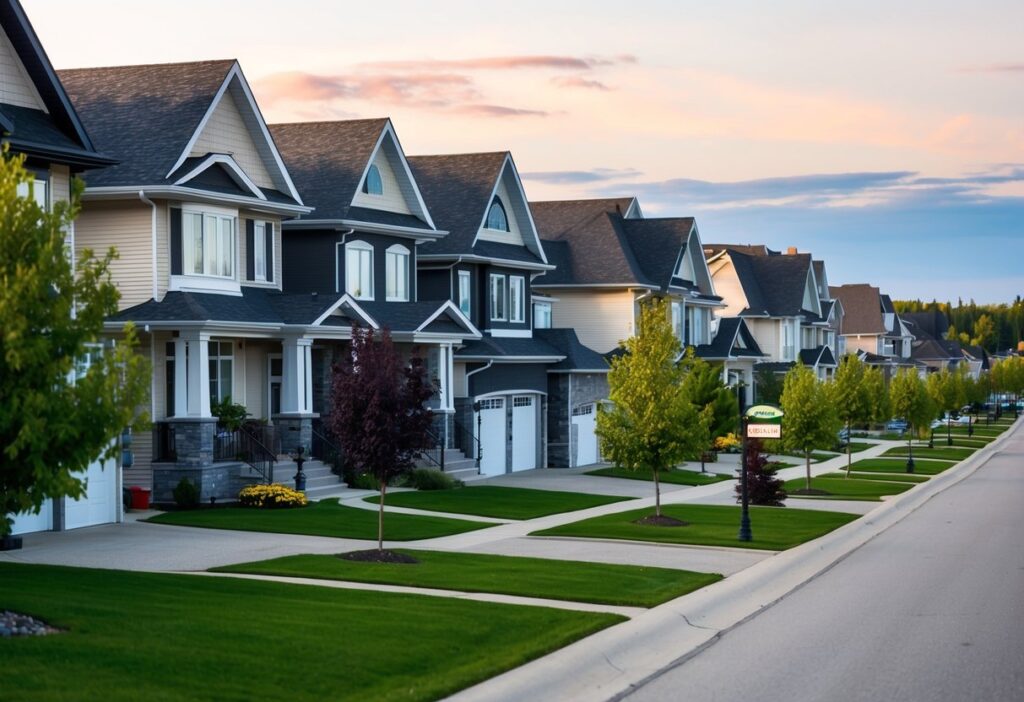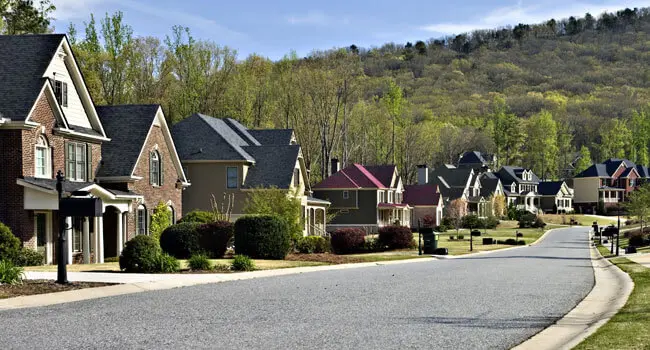Selecting the right neighborhood is a crucial step when buying a home in Canada. Your choice will significantly impact your quality of life, commute, access to amenities, and the value of your investment. This guide outlines the key factors to consider when evaluating neighborhoods to help you make an informed decision that aligns with your needs and priorities.

1. Prioritize Your Lifestyle Needs
Every individual or family has unique lifestyle requirements. Before diving into specific neighborhood attributes, reflect on what is most important to you:
- Do you prefer a quiet, suburban atmosphere or the vibrancy of urban living?
- Are you looking for a community with outdoor activities, cultural attractions, or nightlife?
- Do you prioritize proximity to work, schools, or family?
Understanding your priorities will guide your search and help narrow down your options.
2. Evaluate School Quality
For families with children or those planning to have children, access to quality schools is often a top consideration. Research schools in the area to understand their academic performance, extracurricular offerings, and reputation. Key steps include:
- Checking school rankings and standardized test scores through provincial education websites.
- Visiting schools in person to get a sense of the environment.
- Considering proximity to childcare centers and daycare facilities if applicable.
Even if you don’t have children, living near high-performing schools can boost the long-term value of your property.
3. Assess Safety and Crime Rates
Safety is a fundamental consideration when choosing a neighborhood. Researching crime statistics and speaking with local residents can provide valuable insights into the safety of an area. Resources to consider:
- Municipal websites often provide detailed crime maps and safety reports.
- Online forums or neighborhood groups can offer first-hand accounts of safety concerns.
- Visiting the neighborhood at different times of the day can help you gauge how safe it feels.
Choose a neighborhood where you feel comfortable and secure, especially if you plan to be outdoors frequently or walk to local amenities.
4. Consider Commute Times and Accessibility
Your daily commute can significantly affect your work-life balance. Evaluate the distance to your workplace and the time required to travel. Consider:
- Access to public transportation, such as bus routes, commuter trains, or subway systems.
- Major highways or roads that provide easy access to work, shopping, or other frequently visited locations.
- Walkability and bike-friendliness if you prefer active modes of transportation.
Tools like Google Maps or transit apps can help estimate commute times during peak hours, giving you a realistic picture of your daily travel.
5. Research Local Amenities
Access to amenities enhances your convenience and overall quality of life. Look for neighborhoods that provide:
- Shopping and Dining: Proximity to grocery stores, pharmacies, restaurants, and cafes.
- Healthcare: Nearby hospitals, clinics, and pharmacies for medical needs.
- Recreation: Parks, gyms, fitness centers, and recreational facilities for outdoor and physical activities.
- Cultural Attractions: Libraries, museums, theaters, and other cultural amenities if they are important to your lifestyle.
Living near these amenities can save time and make daily tasks more manageable.

6. Observe Neighborhood Demographics and Community Vibe
The people who live in a neighborhood contribute to its overall character. Spend time in the area to get a sense of the community vibe:
- Is it family-friendly, with children playing and families gathering?
- Does it cater to young professionals or retirees?
- Are the residents welcoming and friendly?
Talking to current residents or attending local events can give you an authentic sense of the neighborhood’s culture.
7. Look at Property Values and Future Development
Research property trends in the area to understand its current value and future growth potential. Key factors include:
- Historical Trends: Are property values stable, rising, or declining?
- Future Development: Are there plans for new infrastructure, businesses, or residential projects that could boost property value?
- Zoning Laws: Ensure there are no future developments that might negatively impact your quality of life, such as industrial projects near residential areas.
Understanding the financial prospects of a neighborhood can help ensure your investment appreciates over time.
Additionally, assess the condition of the property’s windows. High-quality, energy-efficient windows not only improve a home’s comfort and energy savings but also contribute significantly to its resale value and aesthetic appeal. Upgrading or replacing old windows can be a smart investment to increase a property’s marketability.
8. Test the Neighborhood
Before committing to a neighborhood, spend time experiencing it. Visit at different times of the day and week to observe traffic patterns, noise levels, and general activity. Consider:
- Staying overnight in a nearby Airbnb to simulate daily life.
- Exploring local cafes, parks, or community centers to interact with residents.
- Testing your commute to work or school during peak hours.
This hands-on approach can help you confirm whether a neighborhood meets your expectations.
9. Check Accessibility to Public Services
Public services, such as garbage collection, snow removal, and utility infrastructure, are essential for comfortable living. Ensure the neighborhood has reliable access to these services. Additionally, proximity to emergency services like fire stations and police departments can contribute to safety and convenience.

10. Trust Your Instincts
Finally, trust your instincts when making a decision. If a neighborhood feels right and meets your key criteria, it may be the best choice for you. Listen to your gut feelings and weigh them alongside the practical factors.
Conclusion
Choosing the right neighborhood in Canada requires a careful evaluation of factors such as schools, safety, amenities, and commute times. By prioritizing your needs and thoroughly researching prospective areas, you can find a community that aligns with your lifestyle and supports your long-term goals. A thoughtful approach to neighborhood selection will not only enhance your quality of life but also ensure a sound investment in your future.

